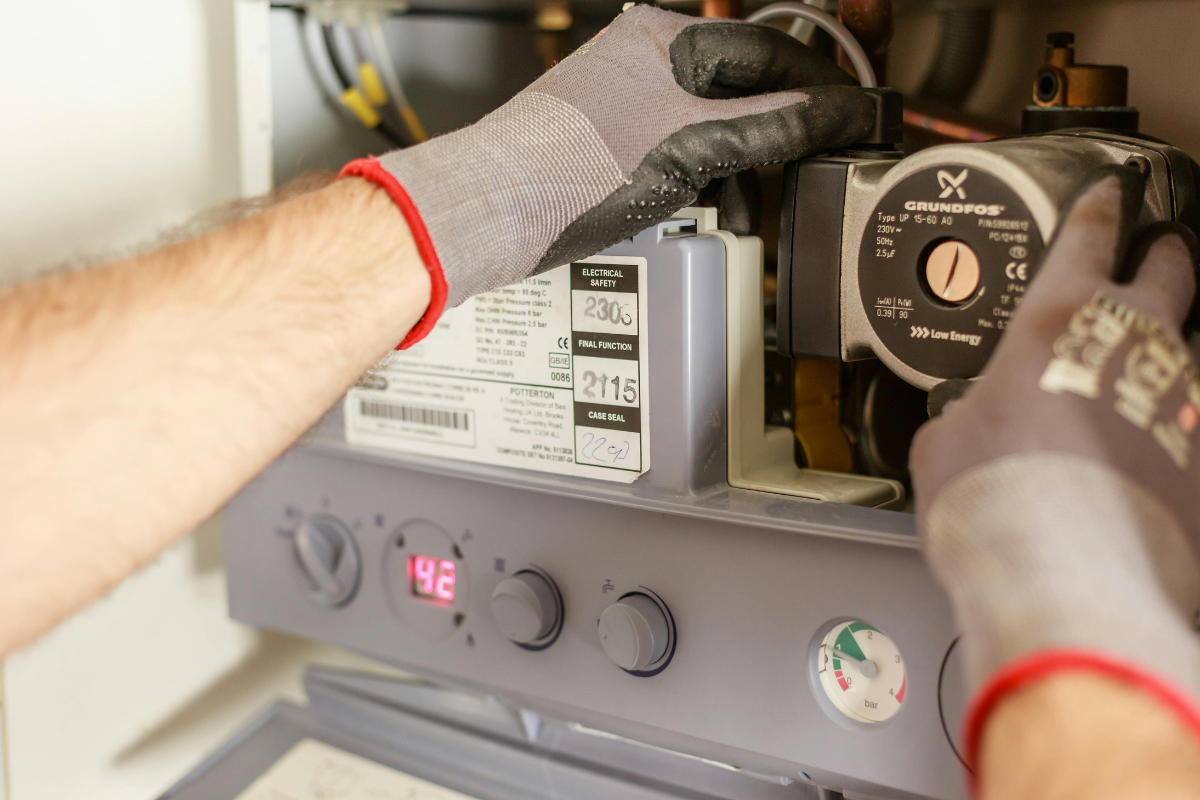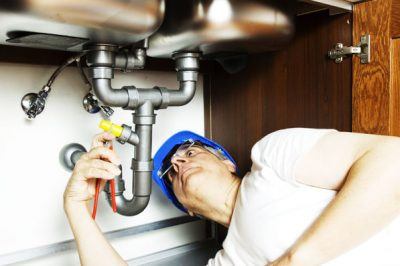On this page in the next paragraphs you can discover some excellent help and advice in relation to Innovative Plumbing Trends Transforming Construction.

Intro
The pipes sector is undergoing a transformative stage driven by technical advancements and expanding problems for sustainability and performance. This write-up discovers emerging fads and technologies forming the future of plumbing.
Smart Pipes Solutions
Integrating wise technology into plumbing systems allows remote monitoring, leakage detection, and automated maintenance. Smart sensing units and IoT (Web of Points) tools allow home owners and plumbers to monitor water usage and identify problems in real-time, leading to more effective source management and aggressive upkeep.
Water Performance Solutions
With raising emphasis on water preservation, cutting-edge services are being developed to minimize water waste in plumbing systems. High-efficiency components, greywater recycling systems, and clever watering controllers are among the innovations aiding consumers lower their water footprint while maintaining convenience and benefit.
Lasting Materials
The shift in the direction of sustainability reaches plumbing materials, with an expanding preference for eco-friendly alternatives. Eco-friendly piping products, such as PEX (cross-linked polyethylene) and HDPE (high-density polyethylene), deal durability and resistance to rust without compromising environmental integrity.
Predictive Maintenance
Anticipating upkeep techniques utilize data analytics and artificial intelligence algorithms to expect and avoid plumbing concerns prior to they take place. By evaluating historic data and efficiency metrics, anticipating maintenance formulas can recognize patterns and abnormalities, enabling proactive interventions to avoid pricey repair work and disturbances.
Enhanced Truth in Plumbing
Increased Reality (AR) technology is revolutionizing plumbing by providing technicians with real-time visual advice for troubleshooting and repair service jobs. AR-enabled smart glasses or mobile applications overlay electronic details onto the physical environment, aiding plumbers picture pipeline formats, recognize hidden leaks, and execute repair work with precision.
Impact of 3D Printing
The advent of 3D printing has actually presented brand-new opportunities in producing pipes components. From custom-made fixtures to detailed pipe installations, 3D printing allows for quick prototyping and on-demand production, reducing lead times and enabling higher customization in plumbing style.
Health And Wellness Characteristics
In response to heightened problems for health and wellness, pipes components are including features such as antimicrobial surface areas, touchless procedure, and self-cleaning devices. These innovations not just boost hygiene but also advertise customer convenience and comfort.
Hygiene-focused Components
Touchless faucets, self-sanitizing commodes, and antimicrobial surface areas are becoming significantly widespread in property and commercial setups, reducing the threat of germ transmission and advertising a cleaner, much healthier atmosphere.
Water Top Quality Monitoring
Developments in water top quality surveillance technologies make it possible for property owners to check the purity and security of their supply of water in real-time. Smart water high quality sensing units can discover contaminants, pH levels, and temperature variations, equipping users to take positive measures to ensure water security.
Remote Pipes Providers
Remote diagnostics and digital assistance are reinventing the method plumbing solutions are provided. Via video conferencing and remote access technologies, plumbing professionals can fix concerns, supply assistance for do it yourself repair work, and also execute remote evaluations, providing greater ease of access and comfort to house owners.
Obstacles and Opportunities
While pipes developments hold enormous pledge, they additionally existing challenges such as information privacy issues, regulatory conformity, and the requirement for workforce training. Addressing these obstacles needs collaboration in between industry stakeholders and governing bodies to make sure safe and liable implementation of brand-new innovations.
Governing Landscape
Regulatory frameworks play an essential duty fit the fostering of pipes developments, with criteria and codes controling whatever from water effectiveness to item security. As innovations remain to advance, regulative bodies need to adjust to ensure consumer protection and environmental stewardship.
Future Overview
The future of plumbing is defined by proceeded technology and combination with other industries such as IoT, renewable energy, and structure automation. By accepting lasting techniques, leveraging arising innovations, and focusing on user-centric design, the plumbing sector is poised to address the evolving requirements of culture while reducing its environmental footprint.
Verdict
In conclusion, the future of pipes is defined by a convergence of modern technology, sustainability, and user-centric style. By embracing clever solutions, lasting materials, and positive upkeep techniques, the plumbing sector can improve performance, advertise security, and contribute to a more lasting future.
The Future of Plumbing: Trends and Innovations to Watch
Introduction to Future Plumbing Trends
The future of plumbing is being shaped by several key factors, including technological advancements, environmental concerns, and changing consumer expectations. These factors are driving the development of new products, services, and practices that enhance the efficiency, sustainability, and convenience of plumbing systems.
Key Trends and Innovations in Plumbing
Smart Plumbing Systems: The integration of smart technology into plumbing systems is transforming the way we manage water usage and detect issues. Smart leak detectors, automated water shut-off valves, and smart faucets are just a few examples of how technology is enhancing plumbing systems. These devices provide real-time data and remote control capabilities, allowing homeowners to monitor and manage their water usage more effectively. Water Conservation and Efficiency: With increasing concerns about water scarcity, there is a growing emphasis on water conservation and efficiency. Innovations such as low-flow fixtures, greywater recycling systems, and rainwater harvesting are becoming more popular. Plumbers are adopting these technologies to help customers reduce their water consumption and save on utility bills. Sustainable Materials: The use of sustainable materials in plumbing systems is gaining traction. This includes the adoption of recyclable and biodegradable materials, as well as the use of non-toxic and eco-friendly products. Sustainable materials help reduce the environmental impact of plumbing systems and promote long-term sustainability. Energy-Efficient Water Heaters: Advances in water heating technology are leading to the development of more energy-efficient systems. Tankless water heaters, solar water heaters, and heat pump water heaters are becoming more prevalent. These systems offer significant energy savings and reduce the carbon footprint of homes and businesses. Trenchless Technology: Trenchless technology is revolutionizing the way plumbing repairs and installations are conducted. This method allows for the repair or replacement of pipes without extensive excavation, minimizing disruption and reducing costs. Techniques such as pipe bursting and cured-in-place pipe (CIPP) lining are gaining popularity. Health and Safety: The focus on health and safety is driving innovations in plumbing systems. Touchless faucets and fixtures, antimicrobial materials, and improved water filtration systems are being developed to enhance hygiene and protect public health. Plumbers are adopting these innovations to meet the growing demand for safer and healthier plumbing solutions. Remote Diagnostics and Monitoring: The ability to diagnose and monitor plumbing systems remotely is becoming increasingly important. Remote diagnostic tools and sensors allow plumbers to identify issues and perform maintenance without the need for on-site visits. This enhances efficiency and reduces the need for costly emergency repairs. Impact of Future Trends on the Plumbing Industry
Enhanced Efficiency: The adoption of smart technology and energy-efficient systems will enhance the efficiency of plumbing systems. This will lead to reduced water and energy consumption, lower utility bills, and improved performance. Sustainability: The focus on sustainability will drive the development and adoption of eco-friendly plumbing solutions. This will contribute to the conservation of natural resources, reduction of waste, and protection of the environment. Improved Customer Experience: The integration of technology and innovative solutions will improve the customer experience. Homeowners will have greater control over their plumbing systems, access to real-time data, and the ability to manage their water usage more effectively. Increased Demand for Skilled Plumbers: The adoption of new technologies and materials will require plumbers to acquire new skills and expertise. There will be an increased demand for skilled plumbers who are knowledgeable about the latest trends and innovations. Cost Savings: The use of efficient and sustainable plumbing solutions will result in cost savings for both homeowners and businesses. Reduced water and energy consumption, lower maintenance costs, and fewer emergency repairs will contribute to overall affordability. Preparing for the Future of Plumbing
Stay Informed: Keep up-to-date with the latest trends and innovations in the plumbing industry. Attend industry conferences, participate in training programs, and engage with manufacturers to stay informed. Invest in Training: Ensure that you and your team are trained in the latest technologies and installation techniques. This will enable you to offer cutting-edge solutions to your customers and stay competitive in the market. Promote Sustainable Solutions: Highlight the benefits of eco-friendly and energy-efficient plumbing solutions to your customers. Educate them about the advantages of adopting sustainable practices and products. Leverage Technology: Embrace smart technology and remote diagnostic tools to enhance your services. Offer remote monitoring and maintenance options to provide added convenience and value to your customers. Collaborate with Manufacturers: Partner with manufacturers of innovative plumbing products to gain access to the latest solutions and technical support. This can also provide opportunities for joint marketing efforts. Focus on Customer Education: Educate your customers about the benefits and functionality of new plumbing technologies. Provide guidance on how to use smart systems and maintain sustainable plumbing solutions. Conclusion
The future of plumbing is being shaped by exciting trends and innovations that promise to enhance efficiency, sustainability, and convenience. By staying informed and embracing these changes, plumbers can provide superior services to their customers and contribute to a more sustainable future. The adoption of smart technology, sustainable materials, and energy-efficient systems will drive the evolution of the plumbing industry, creating new opportunities and challenges. By preparing for the future, plumbers can ensure their success in a rapidly changing market.

I am just very enthusiastic about The Future Of Plumbing: Trends And Technologies To Watch and I hope you appreciated our piece. Enjoyed our content? Please quickly share it. Let other people find it. I take joy in your readership.
Go Services